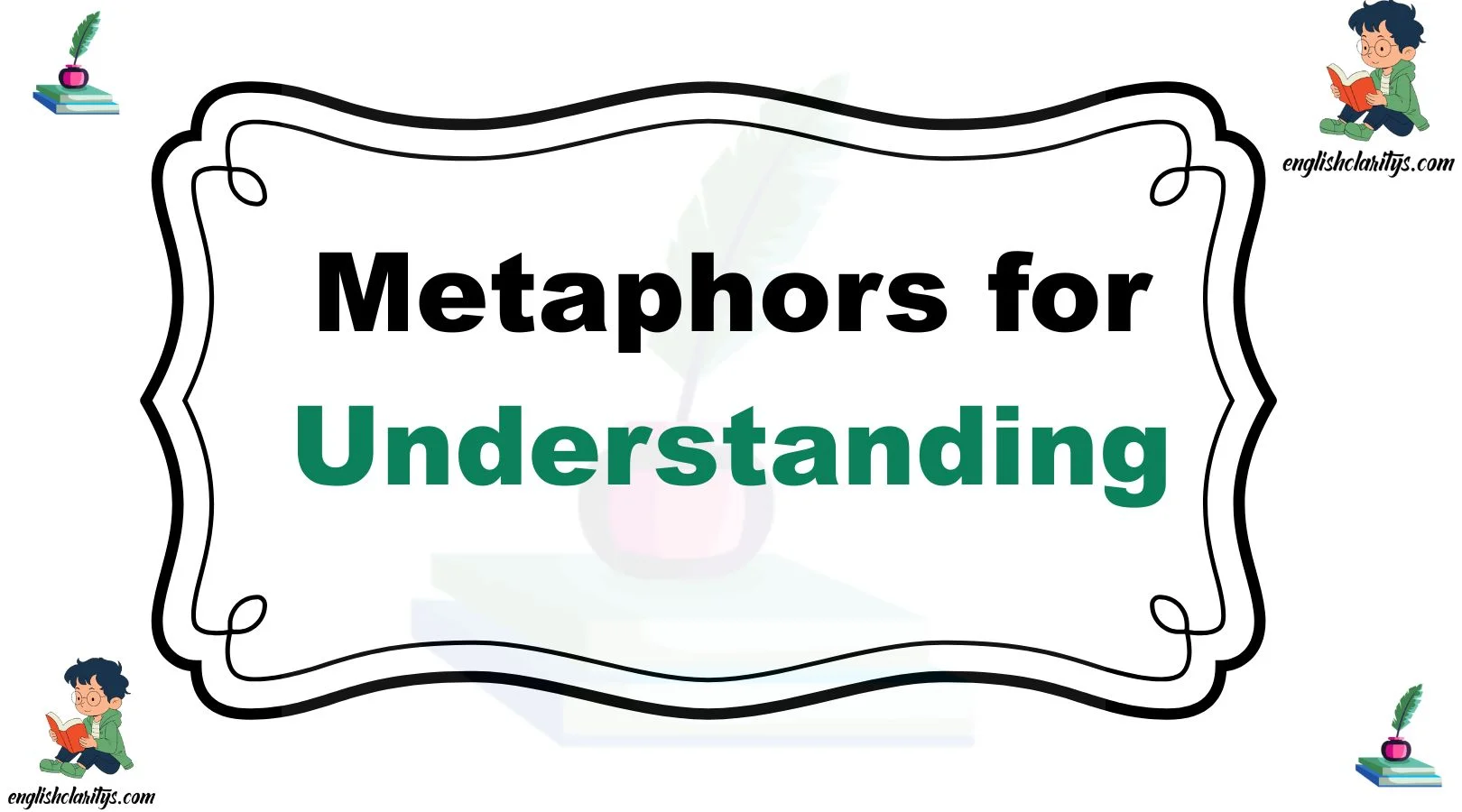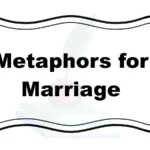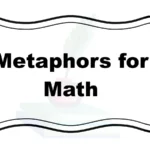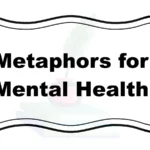Understanding is more than just grasping facts—it’s about truly connecting with ideas, emotions, and people. Finding the right words to describe understanding can make your message more personal and impactful.
When we use metaphors to talk about understanding, we invite others to experience that moment of clarity and empathy alongside us. Whether in conversations, writing, or teaching, these metaphors add warmth and depth to your expressions.
What Does “Understanding” Mean?
At its core, understanding means comprehending or making sense of something. But it also involves empathy—seeing the world through another’s eyes and feeling their experience. It’s a bridge between confusion and clarity, isolation and connection.
When to Use “Understanding”
You might use metaphors for understanding when you want to:
- Explain complex ideas simply
- Show empathy in relationships
- Inspire learning and curiosity
- Reflect on personal growth
- Build connections through shared experiences
Pros and Cons of Using Metaphors for Understanding
Pros:
- Makes abstract ideas tangible
- Engages emotions for deeper impact
- Encourages creative thinking
- Helps explain complex concepts
Cons:
- May confuse if overused or unclear
- Cultural differences can affect interpretation
- Risk of clichés diluting meaning
1. Understanding is a bridge over troubled waters
Definition: It connects confusion or conflict to clarity and calm.
Detailed Explanation: Just as a bridge spans a river, understanding helps us cross from misunderstanding to peace.
Scenario Example: After talking things through, understanding became the bridge over our troubled waters.
Best Use: Conflict resolution, empathy-building
Tone: Calm, reassuring
Other Ways to Say It:
- A pathway to peace
- A connection across divides
- A link between minds
2. Understanding is a key that unlocks doors
Definition: It opens new possibilities and access to knowledge.
Detailed Explanation: When you grasp an idea, it’s like having a key that opens doors previously closed to you.
Scenario Example: Understanding algebra was the key that unlocked my confidence in math.
Best Use: Education, empowerment
Tone: Encouraging, hopeful
Other Ways to Say It:
- A passport to insight
- A code to secrets
- A master key
3. Understanding is a light in the dark
Definition: It illuminates what was previously unclear or confusing.
Detailed Explanation: Like a flashlight in a dark room, understanding helps you see what you couldn’t before.
Scenario Example: The explanation was a light in the dark that helped me grasp the concept.
Best Use: Clarification, learning
Tone: Warm, illuminating
Other Ways to Say It:
- A beacon of clarity
- A spotlight on truth
- A glow of awareness
4. Understanding is a puzzle piece fitting perfectly
Definition: It completes a bigger picture or makes sense of parts.
Detailed Explanation: When something clicks into place, it feels like finding the missing piece to a puzzle.
Scenario Example: Her perspective was the puzzle piece that completed my understanding.
Best Use: Problem-solving, insight
Tone: Satisfying, revealing
Other Ways to Say It:
- A missing link
- A connecting piece
- A perfect fit
5. Understanding is a seed that grows into wisdom
Definition: It starts small but develops into deeper knowledge and insight.
Detailed Explanation: Just as a seed sprouts and matures, understanding can develop into wisdom over time.
Scenario Example: That conversation planted a seed of understanding that grew into lifelong wisdom.
Best Use: Reflection, learning journey
Tone: Hopeful, nurturing
Other Ways to Say It:
- A spark of growth
- A budding insight
- A root of knowledge
6. Understanding is a mirror reflecting truth
Definition: It reveals what’s truly there.
Detailed Explanation: Like a mirror, true understanding reflects reality—our thoughts, emotions, and perspectives—with honesty.
Scenario Example: Her words were a mirror that helped me see my assumptions clearly.
Best Use: Self-awareness, interpersonal insight
Tone: Honest, reflective
Other Ways to Say It:
- A window into the soul
- A clear reflection
- A moment of recognition
7. Understanding is a thread that weaves connection
Definition: It ties people and ideas together.
Detailed Explanation: Just as threads unite fabric, understanding binds people, experiences, and knowledge.
Scenario Example: Shared understanding became the thread that stitched our friendship together.
Best Use: Teamwork, relationship-building
Tone: Warm, unifying
Other Ways to Say It:
- A bond of meaning
- A strand of empathy
- A weaving of minds
8. Understanding is a doorway to empathy
Definition: It opens the way to emotional connection.
Detailed Explanation: When you understand someone, it’s like stepping through a door into their world.
Scenario Example: Listening to her story was a doorway to empathy I hadn’t known before.
Best Use: Compassionate communication
Tone: Inviting, open
Other Ways to Say It:
- A threshold to connection
- A passage to the heart
- An entrance to perspective
9. Understanding is a flame that lights other minds
Definition: It spreads and inspires.
Detailed Explanation: Like one candle lighting another, understanding can ignite insight in others.
Scenario Example: His passion lit a flame of understanding in everyone around him.
Best Use: Teaching, leadership
Tone: Inspiring, warm
Other Ways to Say It:
- A torch passed on
- A spark of brilliance
- A fire of knowledge
10. Understanding is a lens that brings clarity
Definition: It sharpens focus and enhances detail.
Detailed Explanation: Like a lens in glasses or a microscope, understanding allows you to see more clearly.
Scenario Example: Studying history through a cultural lens deepened my understanding.
Best Use: Academic, critical thinking
Tone: Analytical, sharp
Other Ways to Say It:
- A new perspective
- A zoom-in on truth
- A pair of truth glasses
11. Understanding is a map for the unknown
Definition: It provides direction in unfamiliar territory.
Detailed Explanation: Like a map, understanding guides you when you’re unsure where to go or how to think.
Scenario Example: Her advice became a map for navigating my confusion.
Best Use: Coaching, self-guidance
Tone: Supportive, grounding
Other Ways to Say It:
- A GPS for growth
- A guidepost
- A route to clarity
12. Understanding is a shelter in the storm
Definition: A safe space amid emotional or mental chaos.
Detailed Explanation: Just as a shelter protects from harsh weather, understanding brings peace during stress or conflict.
Scenario Example: His empathy was a shelter in my emotional storm.
Best Use: Emotional support, care contexts
Tone: Comforting, secure
Other Ways to Say It:
- A refuge of sense
- A sanctuary of meaning
- A haven of calm
13. Understanding is a bridge between hearts
Definition: It creates emotional connection and unity.
Detailed Explanation: Like a bridge, understanding links two emotional worlds, fostering empathy and compassion.
Scenario Example: Our shared grief created a bridge between hearts.
Best Use: Personal connection, grief, love
Tone: Deep, emotional
Other Ways to Say It:
- An emotional lifeline
- A link of love
- A heart highway
14. Understanding is a flashlight in the fog
Definition: It helps navigate through confusion.
Detailed Explanation: When things are unclear, understanding shines a focused beam, guiding the way forward.
Scenario Example: The teacher’s metaphor was a flashlight in the fog for me.
Best Use: Problem-solving, teaching
Tone: Clear, focused
Other Ways to Say It:
- A beam of insight
- A spotlight on confusion
- A guide through murkiness
15. Understanding is a doorway to healing
Definition: It leads to emotional repair and peace.
Detailed Explanation: Understanding others or yourself can help begin the healing process after conflict or pain.
Scenario Example: Forgiving her was only possible once I stepped through the doorway of understanding.
Best Use: Emotional resolution, therapy, forgiveness
Tone: Tender, restorative
Other Ways to Say It:
- A passage to peace
- A healing threshold
- An emotional reset
16. Understanding is a telescope to the mind
Definition: It allows you to see into deeper thought or faraway perspectives.
Detailed Explanation: Like a telescope helps us see what’s far away, understanding helps us comprehend things beyond our immediate experience.
Scenario Example: Reading that memoir gave me a telescope into another life.
Best Use: Literature, intercultural awareness
Tone: Expansive, reflective
Other Ways to Say It:
- A viewfinder of thought
- A lens of empathy
- A scope of perspective
17. Understanding is a tuning fork for communication
Definition: It helps people align in frequency and meaning.
Detailed Explanation: Like a tuning fork brings musical instruments into harmony, understanding creates aligned communication.
Scenario Example: Their shared values acted like a tuning fork for effective dialogue.
Best Use: Teamwork, relationships, facilitation
Tone: Harmonizing, connected
Other Ways to Say It:
- A harmony tool
- A frequency match
- A resonance bridge
18. Understanding is a ladder to wisdom
Definition: It’s a step in a greater journey toward deep knowledge.
Detailed Explanation: Each level of understanding builds on the last, eventually reaching insight and wisdom.
Scenario Example: Understanding small concepts helped me climb the ladder to bigger ideas.
Best Use: Learning journeys, mentorship
Tone: Motivational, developmental
Other Ways to Say It:
- A staircase of thought
- A step-up to growth
- A climb to clarity
19. Understanding is a mirror into the mind
Definition: It reveals thoughts and beliefs clearly.
Detailed Explanation: Like a mirror shows the face, understanding reflects what’s going on in someone’s thoughts.
Scenario Example: Her journal entries were a mirror into her evolving understanding.
Best Use: Self-reflection, therapy
Tone: Personal, introspective
Other Ways to Say It:
- A thought reflection
- A brain scan of insight
- A mental window
20. Understanding is a net that catches meaning
Definition: It gathers scattered thoughts or emotions into clarity.
Detailed Explanation: Like a net gathers fish, understanding helps collect what once felt abstract or disconnected.
Scenario Example: The summary acted like a net, catching all the key ideas.
Best Use: Study tools, comprehension support
Tone: Structured, organized
Other Ways to Say It:
- A web of meaning
- A catcher of thought
- A basket of insight
21. Understanding is a sunrise in the mind
Definition: A new beginning filled with clarity and promise.
Detailed Explanation: As the sun clears the night, understanding clears confusion and brightens thought.
Scenario Example: The solution came like a sunrise, lighting up everything in my head.
Best Use: Inspiration, enlightenment
Tone: Uplifting, vivid
Other Ways to Say It:
- A dawn of insight
- A morning of thought
- A mental awakening
22. Understanding is a decoder ring for meaning
Definition: It reveals hidden or confusing messages.
Detailed Explanation: Just like a decoder makes secret codes readable, understanding helps interpret complex or symbolic ideas.
Scenario Example: Her metaphor acted like a decoder ring for my confusion.
Best Use: Literature analysis, emotional insight
Tone: Clever, unlocking
Other Ways to Say It:
- A code-breaker
- A cipher key
- A translator of thoughts
23. Understanding is a garden of empathy
Definition: It cultivates connection and compassion.
Detailed Explanation: Understanding nurtures empathy like soil feeds plants, helping it grow and flourish.
Scenario Example: Each conversation helped me plant another flower in the garden of empathy.
Best Use: Relationships, emotional growth
Tone: Gentle, nurturing
Other Ways to Say It:
- A field of compassion
- A bed of kindness
- A greenhouse of connection
24. Understanding is a foundation for trust
Definition: It’s what solid relationships are built on.
Detailed Explanation: Without understanding, trust has nothing to stand on—like a house without a solid base.
Scenario Example: Understanding each other was the foundation of our lasting partnership.
Best Use: Teamwork, partnerships
Tone: Solid, dependable
Other Ways to Say It:
- A bedrock of belief
- A base of respect
- A ground of connection
25. Understanding is a compass for the soul
Definition: It gives internal direction and clarity.
Detailed Explanation: Like a compass pointing north, understanding helps people follow their values and navigate life’s complexity.
Scenario Example: Her insight was a compass that helped me realign my heart and decisions.
Best Use: Personal growth, spiritual reflection
Tone: Deep, soulful
Other Ways to Say It:
- A guide for inner peace
- A navigator of the spirit
- A direction for values
Exercises: Multiple-Choice Questions
Test your grasp of the metaphors for understanding from the article.
- Which metaphor suggests that understanding opens new paths and possibilities?
A. A mirror reflecting truth
B. A bridge over troubled waters
C. A key that unlocks doors
D. A shelter in the storm
– Answer: C - “Understanding is a light in the dark” primarily conveys that understanding:
A. Confuses us further
B. Illuminates what was unclear
C. Shields us from reality
D. Restricts our vision
– Answer: B - If we say “understanding is a thread that weaves connection,” we mean it:
A. Creates distance
B. Binds ideas and people together
C. Ends relationships
D. Unravels meanings
– Answer: B - Which metaphor emphasizes self-reflection and honesty?
A. A garden of empathy
B. A mirror reflecting truth
C. A decoder ring for meaning
D. A compass for the soul
– Answer: B - “Understanding is a telescope to the mind” helps us:
A. Focus only on ourselves
B. See distant or deeper perspectives
C. Close off new ideas
D. Keep thoughts hidden
– Answer: B - Which metaphor would best illustrate finding calm during confusion?
A. A flashlight in the fog
B. A puzzle piece fitting perfectly
C. A garden of empathy
D. A maze of discovery
– Answer: A - “Understanding is a decoder ring for meaning” implies it:
A. Complicates messages further
B. Makes hidden or confusing ideas clear
C. Locks away information
D. Prevents communication
– Answer: B - Which metaphor highlights how understanding can inspire others?
A. A ladder to wisdom
B. A flame that lights other minds
C. A net that catches meaning
D. A foundation for trust
– Answer: B - Describing understanding as “a doorway to healing” emphasizes:
A. Barriers between people
B. The start of emotional repair
C. Permanent damage
D. Increased confusion
– Answer: B - “Understanding is a compass for the soul” best captures its role as:
A. A barrier to self-knowledge
B. A tool for internal direction and values
C. A lock on our emotions
D. An obstacle to growth
– Answer: B
Frequently Asked Questions
1. How do I choose the most effective metaphor for a given situation?
Consider the emotion you want to convey (clarity, empathy, inspiration) and the context (conflict resolution, teaching, personal growth). Match your goal to the metaphor’s imagery for maximum impact.
2. Can metaphors ever be confusing?
Yes—if they’re overly complex or culturally specific. Always explain your metaphor briefly and ensure your audience shares enough background to interpret it correctly.
3. How many metaphors should I use in one piece of writing?
Use them sparingly—one or two strong metaphors can be powerful. Too many may overwhelm the reader or dilute each metaphor’s effect.
4. What’s the difference between a metaphor and a simile?
A simile uses “like” or “as” to make comparisons (“understanding is like a light in the dark”). A metaphor states the comparison directly (“understanding is a light in the dark”), making it more immediate and forceful.
5. How can I practice creating my own metaphors?
- List key qualities of the concept (e.g., understanding = clarity, connection).
- Brainstorm objects or experiences that share those qualities.
- Combine them into a direct statement.
- Test it in context to see if it feels natural and insightful.
Conclusion
Metaphors for understanding transform abstract concepts into vivid, relatable images. Whether you describe understanding as a bridge, a mirror, or a compass for the soul, each metaphor deepens emotional resonance and clarity.
By choosing the right metaphor—one that aligns with your tone and audience—you can foster empathy, illuminate complex ideas, and build stronger connections. Practice selecting and refining metaphors, and watch your communication come alive with warmth and meaning.




